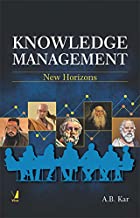Annotation
The book is a comprehensive account of the application of knowledge in resolving organizational issues. This is a new paradigm in managing the affairs of any organization. The case studies, from real life experiences by the author, amply justify the viability of knowledge application in the organizations.
The book brings in different classifications of knowledge, i.e. tacit, explicit and embedded categories, and their influences on knowledge management in the organizational context.
The brain-mind dialogue drives the comprehension of the different parameters of knowledge with resultant application strategy. This is highlighted in the discussions.
The author, recalling his exposure to various organizations in India and abroad, has introduced the concept of a separate knowledge stream, called ‘embedded knowledge’, which evolves mainly from prevailing organizational culture.
The views of experts on knowledge management like Nonaka Ikujiro and Hirotaka Takeuchi, Thomas H. Davenport and Laurence Prusak, Kimiz Dalkir, Paul R. Gamble and John Blackwell et.al have been considered to offer further credence to the author’s analysis.
The author argues that knowledge management is an opening of new horizons to sustain progress, prosperity and intellectual superiority of the organization.
The book is a compilation of different elements of knowledge management as perceived, experienced and practiced by the author during more than three decades of his engagements in the organizations in India and abroad. It is also a significant attempt to focus on new horizons, in keeping with global operations of the organizations, wherever they are expected to operate from.
At this juncture of progress and prosperity in the world, there is hardly any scope to adhere to stereotyped ideas in respect of technology, techniques, systems and procedures. The bottom line is to survive on global competition with all-round innovation, incubation and inclusion. Knowledge management has a major role in this.
The book depicts an attempt to channelize the efforts in such way that organizational objectives are aligned to individual aspirations.

